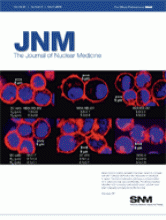TO THE EDITOR: The Italian investigators recently reported an interesting retrospective study on the effect of total prostate-specific antigen (PSA), PSA velocity, and PSA doubling time on the lesion detection rate of 11C-choline PET/CT in 190 men who had been treated with radical prostatectomy and then presented with biochemical failure (1). Similar to a prior study (2), the general conclusion was that 11C-choline detection rate increases as the values of the PSA parameters are increased, reflecting the underlying higher disease burden. In particular, the authors reported that the likelihood of lesion detection increases with a trigger PSA higher than 2.4 ng/mL or in those patients with PSA less than 2.4 ng/mL when PSA doubling time is lower than 3.4 mo or PSA velocity is higher than 1 ng/mL/y. However, additional information is needed to decipher the full potential clinical impact of the reported findings. First, the authors do not explicitly provide a definition for biochemical failure. It is assumed that a detectable serum PSA level of at least 0.2 ng/mL was considered as evidence for biochemical recurrence (PSA relapse), similar to that reported by Pound et al. (3), since this value is shown as the minimum PSA in the reported range of PSA levels. It also appears that there was a mixture of patients with PSA relapse only and those with biochemical failure who had other imaging studies with abnormal findings (e.g., bone scan or CT). Despite the notion that 11C-choline had a better detection rate than standard imaging, the important clinical question is what the detection rate of nonstandard 11C-choline PET/CT is in the substantial number of men who present with PSA relapse only when standard imaging studies are negative (by definition). This question is important because currently, the most appropriate diagnostic and therapeutic maneuvers for asymptomatic men with biochemical failure remain undefined (4–6). It is suggested that the results of the report by Castellucci et al. would have been considerably more clinically useful if they had limited their data analysis (or had included the relevant subset of data analysis) to the PSA-relapse-only patients, who at this point cannot be deciphered from the published article. If 11C-choline can provide unique information in this specific clinical setting, in which there is currently a void of a viable diagnostic imaging method, then important therapeutic decisions (e.g., salvage local vs. systemic therapy, or both) can be made earlier than when disease becomes apparent on standard imaging, potentially leading to improved patient outcome. Of course, validation of PET findings becomes challenging because by definition there are no standard imaging correlates (7). In such cases, tissue sampling, long-term follow-up, and content validity (e.g., pattern of detected lesions) may serve for validation. The second issue that needs attention is the definition of true-positive PET findings in this study, which was based on visual observation of any focal 11C-choline uptake higher than surrounding background levels, correlation to other imaging studies (which we just argued would not be possible if we deal with a restricted definition of biochemical failure with no standard imaging evidence of disease), and regression with therapy or progression with no or ineffective therapy in subsequent scans. However, these validation criteria, as admitted by the authors, are the main limitation of their study. Perhaps these criteria are the reason for no false-positive results with 11C-choline PET/CT in this study. For example, decline or resolution of focal uptake does not necessarily mean that a “malignant” lesion responded to treatment, because that lesion may have actually been benign and might have resolved (or improved) regardless of treatment for cancer. Such lesions are in fact false-positives but are labeled true-positives incorrectly simply because of the flawed validation criteria. Finally, it would have been helpful to know if there was a relationship between the PSA parameters and the chance of detecting only local recurrence, only metastatic disease, or both. Clearly additional studies with well-defined groups of patients, validation criteria, and endpoints would be needed in this important clinical setting.
Footnotes
-
COPYRIGHT © 2010 by the Society of Nuclear Medicine, Inc.







